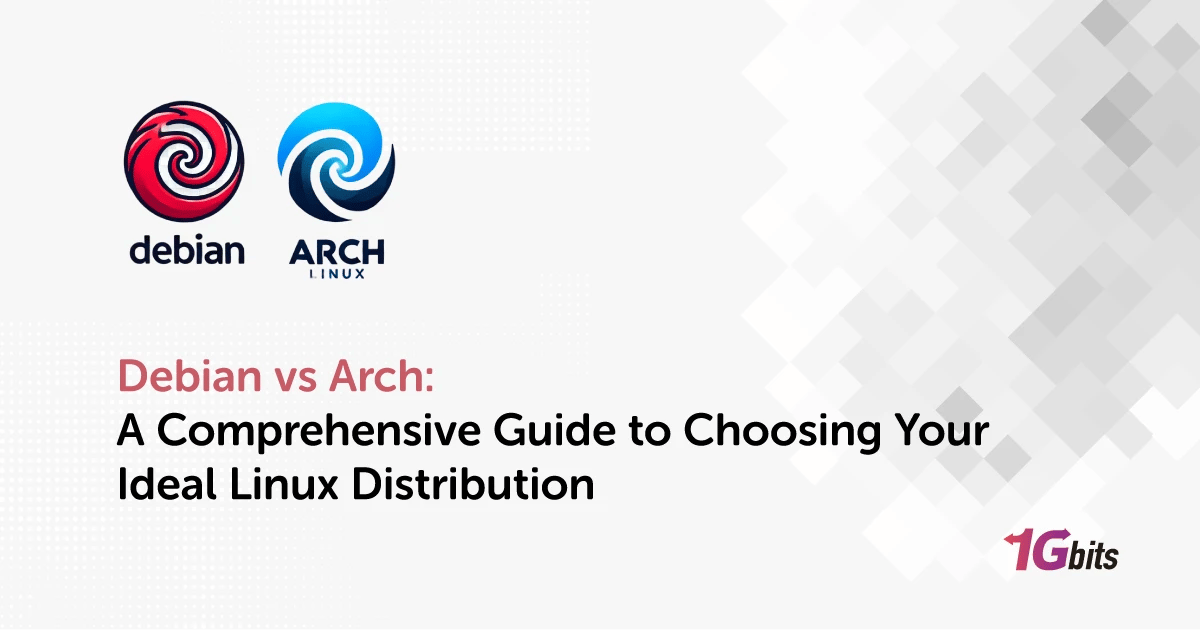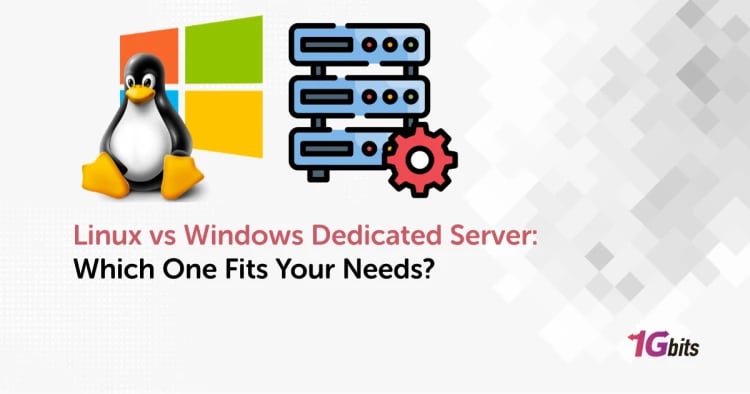In the ever-evolving world of Linux distributions, Debian and Arch Linux stand out as two of the most prominent choices for users seeking stability, flexibility, and control over their computing environment. In this article, we will delve into the intricate details of Debian vs Arch to help you understand which distribution might be the better fit for your needs.
Whether you are a developer, gamer, or system administrator, the debate between Debian vs Arch is one that continues to spark interest. We will explore Debian vs Arch for gaming, debian vs arch minecraft including a comparison of how each handles popular titles like Minecraft, as well as examining Debian vs Arch performance across various tasks.
Security is another critical factor, and we’ll assess Debian vs Arch security to see which offers better protection. For those considering a server setup, we’ll evaluate Debian vs Arch for server use, along with a general comparison of Debian vs Arch Linux" in daily usage. Additionally, we’ll answer the question: What is the difference between Debian and Arch? by examining debian vs arch battery life, developer tools, and more.
Finally, we’ll also touch on the distinctions between Debian based vs Arch based distributions, and provide an Arch vs Debian benchmark analysis to determine, Is Debian better than Arch? Join us as we explore the detailed landscape of Debian vs Arch to find the best Linux distribution for your specific needs.
Whom is Debian Ideal For?
Debian is ideal for users who prioritize stability, security, and a well-established community. Its robust and reliable nature makes it a preferred choice for system administrators, developers, and anyone who needs a dependable operating system for critical tasks. Debian’s commitment to free software and its long-term support cycles make it an excellent option for servers and enterprise environments, where consistency and reliability are paramount. If you want to know what Debian is, see the article What is Linux Debian?
When comparing Debian vs Arch, Debian is often the go-to for those who value a stable, predictable experience over the latest software updates. This is particularly important in professional settings, where unexpected changes can lead to downtime or disruptions. For developers, Debian offers a vast array of development tools and libraries, all thoroughly tested and maintained within its repositories.
In the context of Debian vs Arch for gaming, Debian provides a solid foundation with access to a wide range of gaming software, though it may not have the bleeding-edge packages that Arch offers. However, for gamers who prefer a stable system without frequent updates, Debian is an excellent choice.
For those considering Debian, it's essential to know which version you're using to ensure compatibility with certain software. Learn how to check your Debian version here.
The Arch vs Debian performance comparison often highlights Arch's speed and minimalism, which appeal to users who enjoy customizing every aspect of their system. However, Debian’s performance is more than sufficient for most users, particularly those who need a system that just works out of the box. In summary, Debian is ideal for users who need a reliable, secure, and stable operating system, particularly in professional and server environments, and for those who prefer a no-nonsense approach to computing in the ongoing Debian vs Arch debate. To read the comparison of Ubuntu and Debian, refer to the Debian vs Ubuntu article.
Whom is Arch Ideal For?
Arch Linux is ideal for users who value control, customization, and a deep understanding of their operating system. Unlike Debian, which is known for its stability and ease of use, Arch caters to those who prefer a minimalist, DIY approach to Linux. While Debian offers a more user-friendly experience out of the box, Arch Linux requires users to set up everything from scratch, allowing for a highly personalized system.If you need a guide to install Arch Linux, you can also refer to the How to install Arch Linux article.
Arch Linux is particularly suited for advanced users or those eager to learn more about Linux's inner workings. Its rolling release model ensures that users always have access to the latest software, in contrast to Debian's focus on stability through periodic releases. This makes Arch appealing to those who want the cutting edge of technology without waiting for new Debian versions.
The Arch Wiki is another strong point, providing comprehensive documentation that supports users in configuring their system exactly as they want. While Debian has excellent documentation, Arch’s resources are more extensive and detailed, catering to those who enjoy the challenge of troubleshooting and problem-solving.
In a Debian vs Arch comparison, Arch Linux stands out for users who prioritize customization over convenience. Debian, with its pre-configured packages and straightforward setup, might be more suitable for those who prefer a more guided experience. However, for users who want to learn by doing and have a hands-on approach to system management, Arch is the ideal choice, offering unparalleled flexibility and the latest software directly from the source
Debian vs Arch Linux: Similarities
|
|
|
||||||
|
|
|
||||||
|
|
|
||||||
|
|
|
||||||
|
|
|
||||||
|
|
|
Debian and Arch Linux are two of the most well-known and respected distributions in the Linux community, each with a distinct philosophy and user base. However, despite their differences, they share several similarities that make them both appealing to different types of users. Understanding these similarities can help users decide which distribution is better suited to their needs. To read the comparison and Debian, refer to the Debian vs Fedora article.
1. Open-Source Philosophy
Both Debian and Arch Linux strongly adhere to the principles of free and open-source software. Debian is known for its commitment to the Free Software Guidelines (DFSG), which ensure that the software included in Debian's repositories is freely available and can be freely modified and redistributed. Arch Linux, while not as strict as Debian in this regard, also emphasizes simplicity and transparency, core tenets of the open-source philosophy. Both distributions provide users with complete control over their systems, allowing them to modify and distribute their setups as they see fit.
2. Package Management
One of the most important aspects of any Linux distribution is its package management system, which governs how software is installed, updated, and managed on the system. In the case of Debian vs Arch, both distributions offer robust package management tools tailored to their philosophies.
Debian uses APT (Advanced Package Tool) in conjunction with dpkg for package management. APT is user-friendly and efficient, providing a straightforward way to manage software, dependencies, and updates. On the other hand, Arch Linux uses Pacman, a simple yet powerful package manager that aligns with Arch's minimalist philosophy. Both APT and Pacman are designed to simplify software installation and management, although Pacman tends to be more hands-on, reflecting Arch's emphasis on user control.
3. Community Support
The strength of a Linux distribution often lies in its community, and in this regard, both Debian and Arch Linux excel. When comparing Debian vs Arch, it becomes clear that both distributions benefit from active, knowledgeable, and dedicated communities that contribute to the development, support, and documentation of their respective systems.
Debian's community has been active for decades, contributing to an extensive body of documentation, forums, mailing lists, and support channels. Similarly, Arch Linux has a vibrant community, best exemplified by the Arch Wiki, which is considered one of the most comprehensive resources in the Linux world. The Wiki covers almost every aspect of Arch Linux, from installation to advanced configuration, and even users of other distributions frequently turn to the Arch Wiki for help.
4. Customization
Customization is a key factor that draws users to both Debian and Arch Linux. In the debate of Debian vs. Arch, both distributions offer the flexibility to create a system tailored to the user's needs, though they approach this in different ways.
Debian allows for extensive customization, but it also provides a more structured and guided setup process. Users can choose between different desktop environments and pre-configured packages during installation, which can save time for those who prefer a ready-to-use system. Arch Linux, on the other hand, is designed to be built from the ground up by the user. This approach gives users complete control over every aspect of their system, from the kernel to the window manager, but it also requires a deeper understanding of Linux and more time to set up.
5. Software Availability
When it comes to software availability, Debian vs. Arch comparisons reveal that both distributions offer a vast array of software options, though they handle it differently. Debian's repositories are massive, containing thousands of packages that are rigorously tested to ensure stability and security. This makes Debian a reliable choice for users who need a wide range of software that is stable and well-supported.
Arch Linux, while also offering extensive software availability, takes a different approach. The Arch User Repository (AUR) is a unique feature of Arch that allows users to access a massive library of user-contributed packages. The AUR is community-driven, meaning that users can create and share packages with others, leading to a dynamic and ever-growing repository of software. This gives Arch users access to the latest software, even if it's not officially supported in the main repositories.
6. Rolling Release Option
While Arch Linux is well-known for its rolling release model, Debian also offers a rolling release option through its Testing branch. In the Debian vs. Arch context, this similarity is often overlooked but important for users who want access to newer software while still relying on a robust system.
Arch Linux's rolling release model means that users continuously receive updates without needing to upgrade to a new version of the distribution. This keeps the system up-to-date with the latest software and security patches. Debian's Testing branch operates in a similar fashion, offering newer packages that are in the process of being vetted for the next stable release. While Testing isn't as bleeding-edge as Arch, it provides a good balance between stability and having access to more recent software.
When comparing Debian vs. Arch Linux, it's clear that while they cater to different user bases, they share several similarities that contribute to their popularity. Both emphasize open-source principles, provide powerful package management systems, benefit from strong community support, allow for extensive customization, and offer a wide range of software options. However, the level of control and the way these similarities are implemented can help users decide which distribution aligns better with their needs and preferences. Whether you prioritize stability with Debian or prefer the cutting-edge flexibility of Arch, both distributions offer robust and highly customizable environments for their users.
Key Differences: Debian vs Arch Linux
|
|
|
||||||
|
|
|
||||||
|
|
|
||||||
|
|
|
||||||
|
|
|
||||||
|
|
|
||||||
|
|
|
Debian and Arch Linux are two popular Linux distributions, each with its own set of features, philosophies, and user bases. While both are highly regarded in the Linux community, they cater to different types of users and have distinct approaches to system design and management. Understanding the key differences between Debian vs. Arch can help users make an informed choice about which distribution is better suited to their needs.
For a broader comparison with other Linux distributions, you can also explore Debian vs CentOS to see how Debian stacks up against another widely used server-focused OS
1. Philosophy
The core philosophy of each distribution significantly influences its design and user experience. Debian is known for its commitment to stability and its strong adherence to the principles of free and open-source software. The Debian project emphasizes providing a reliable and secure operating system, which makes it an ideal choice for servers, workstations, and users who prioritize a stable environment. Debian’s approach is conservative, with a focus on long-term support and reliability over the latest features.
Arch Linux, in contrast, embraces simplicity, flexibility, and customization. The Arch philosophy is about giving users complete control over their system, providing only the essentials and letting users build their system from the ground up. This do-it-yourself (DIY) approach makes Arch Linux highly adaptable to different needs but also requires more effort and expertise from the user. Arch is designed for those who prefer to have the most current software and are comfortable with hands-on system management.
2. Installation Process
The installation process is one of the most noticeable differences when comparing Debian vs. Arch. Debian offers a guided installation process with a graphical installer that walks users through each step. This installer provides several predefined options, such as choosing desktop environments, installing additional software, and configuring network settings. Debian’s installer is designed to be user-friendly, making it accessible even for beginners.
On the other hand, Arch Linux’s installation process is entirely manual. There is no graphical installer, and users must perform each step manually, from partitioning the disk to configuring the network and installing the bootloader. This approach is in line with Arch’s philosophy of simplicity and control but can be daunting for users who are not familiar with Linux. The Arch Wiki provides detailed instructions for installation, but the process requires a deep understanding of the system and its components.
3. Package Management
Debian vs. Arch Linux also differs significantly in their approach to package management. Debian uses the Advanced Package Tool (APT) in conjunction with dpkg to handle software installation, updates, and removal. APT is known for its ease of use and efficiency, with a vast repository of pre-compiled binaries that have been tested for stability and compatibility. Debian’s package management is designed to be straightforward, with a focus on providing stable and secure software.
Arch Linux uses Pacman as its package manager, which is equally powerful but designed to be minimal and fast. Pacman handles both binary packages from the official Arch repositories and source-based packages from the Arch User Repository (AUR). The AUR is a unique feature of Arch that allows users to access a massive library of community-contributed packages, often including the latest software not yet available in official repositories. This makes Arch more flexible in terms of software availability, but it also places more responsibility on the user to ensure system stability.
4. Release Model
The release model is another critical difference in the Debian vs. Arch comparison. Debian follows a fixed release model, with a stable version released every two to three years, supplemented by updates and security patches. For users who need more current software, Debian offers a Testing branch that provides a rolling release experience, although it is not as stable as the Stable branch.
Arch Linux, however, is a true rolling release distribution. This means that instead of waiting for new versions, Arch users receive continuous updates as soon as they are available. This approach ensures that Arch users always have access to the latest software, but it can also introduce stability risks, as new updates are not as extensively tested as they are in Debian. The rolling release model is ideal for users who prefer cutting-edge software and are comfortable with potential issues arising from frequent updates.
5. System Stability
Stability is a key factor in the Debian vs. Arch debate. Debian prioritizes stability above all, making it a preferred choice for servers, production environments, and users who require a reliable system. The Stable branch of Debian undergoes rigorous testing before release, ensuring that it is free of major bugs and security vulnerabilities.
Arch Linux, with its rolling release model, focuses more on providing up-to-date software than on maintaining absolute stability. While Arch can be very stable when managed properly, the constant flow of updates can introduce issues that may require manual intervention. This makes Arch less suitable for mission-critical systems where stability is paramount.
6. Target Users
Finally, the target user base is an essential difference between Debian vs. Arch. Debian is designed to be versatile and user-friendly, making it suitable for users of all experience levels. Its extensive documentation and large user community provide ample support for beginners and experienced users alike.
Arch Linux, in contrast, is geared towards advanced users and those who enjoy learning by doing. The DIY nature of Arch requires a solid understanding of Linux and a willingness to troubleshoot issues independently. While Arch’s documentation is excellent, the distribution assumes a higher level of technical competence from its users.
In conclusion, Debian vs. Arch Linux presents a clear contrast between stability and customization, guided installation and manual setup, and a fixed release model versus a rolling release. Debian’s focus on stability, user-friendliness, and long-term support makes it ideal for users who prioritize reliability, while Arch’s emphasis on control, customization, and cutting-edge software appeals to advanced users who enjoy hands-on system management. Understanding these key differences can help users choose the distribution that best aligns with their needs and preferences.
For those considering other user-friendly Debian-based options, check out our comparison of Debian vs Mint, where we explore the similarities and differences between these two popular distributions.
Conclusion
When comparing Debian vs Arch Linux, it's clear that each distribution caters to distinct user preferences and needs, making the choice between them dependent on what you prioritize in your computing experience. Debian is ideal for those who value stability, reliability, and ease of use. It offers a robust, user-friendly environment with long-term support, making it suitable for servers, desktops, and users who want a system that just works out of the box. Its guided installation process and extensive documentation also make it accessible for beginners.
For users running Debian, learning basic system commands like restarting the network can be crucial for maintaining smooth operation. You can refer to our guide on how to restart the network on Debian for a step-by-step tutorial.
In particular, if you're considering setting up a VPS server using Debian, you'll appreciate its stability and security, which are crucial for managing a remote server. Debian’s extensive package repositories provide access to thousands of applications and tools, making it easy to customize and scale your server according to your needs. Furthermore, with Debian VPS servers, you benefit from strong community support and regular security updates, ensuring your server remains secure and functional over time. Whether you need a simple web server, database management, or even more advanced configurations, Debian's straightforward approach makes it a top choice for VPS hosting.
Arch Linux, on the other hand, is tailored for advanced users or those who want to learn more about Linux by building their system from scratch. Its rolling release model ensures access to the latest software, appealing to users who prefer to stay on the cutting edge. Arch's philosophy of simplicity and control allows for a highly customizable system, though it requires a higher level of technical expertise and a willingness to manage the system actively.
In essence, if you prioritize stability and ease of use, Debian is the better choice. However, if you seek a more hands-on experience with maximum control and customization, Arch Linux offers an unparalleled opportunity to tailor your system to your exact specifications. Both distributions have strong communities and resources, so your decision should align with your technical comfort level and desired level of system control.
For those looking to implement these distributions in a server environment, exploring Linux VPS solutions can provide the perfect balance of flexibility and control, allowing you to leverage the strengths of either Debian or Arch in a virtualized setting.













